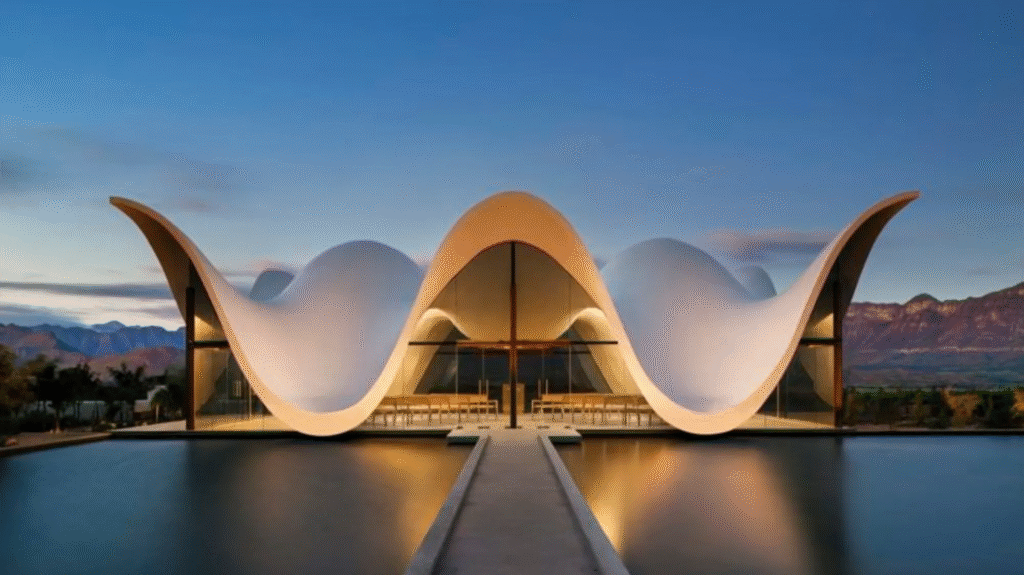Architecture is more than shelter—it’s a reflection of human progress, culture, innovation, and philosophy. From the ancient stone temples of Mesopotamia to futuristic smart buildings in modern cities, architectural styles and technologies have evolved dramatically. Each era of architecture tells a story of civilization, its values, resources, and advancements.
In this article, we delve into the evolution of architecture across major historical periods, examining how timeless structures continue to inspire contemporary design and cultural identity.
The Origins: Prehistoric and Ancient Timeless Structures

Prehistoric Shelters and Monuments
Early humans constructed basic shelters using natural materials such as mud, stones, and wood. These structures were utilitarian—designed for protection rather than aesthetics.
Notable Structures:
- Dolmens and Menhirs: Megalithic tombs like Stonehenge.
- Cave dwellings: Like those found in Lascaux, France.
These structures laid the foundation for spatial organization and community living.
Egyptian Architecture: Monuments of Immortality
Ancient Egyptian architecture, dating back to 3000 BCE, is synonymous with grandeur and symmetry. Temples, pyramids, and obelisks reflect spiritual beliefs and divine kingship.
Key Features:
- Monumentality (e.g., Pyramids of Giza)
- Hieroglyphic carvings
- Aligned with astronomical principles
Egyptians perfected stone-cutting techniques that influenced Mediterranean and Middle Eastern civilizations.
Classical Architecture: Order, Balance, and Civic Identity
Greek Architecture: Birth of Classical Orders
Greek architecture introduced proportion, balance, and aesthetic principles still admired today. Structures were designed to reflect harmony and the ideals of democracy and rationality.
Famous Examples:
- The Parthenon in Athens
- Use of Doric, Ionic, and Corinthian columns
These elements became the blueprint for civic buildings and temples in later cultures.
Roman Architecture: Engineering Excellence
Romans inherited Greek ideals but added innovation in materials and engineering, notably concrete. Their focus was on public infrastructure—amphitheaters, aqueducts, and forums.
Key Contributions:
- Arch and dome construction
- Colosseum, Pantheon
- Sophisticated road and aqueduct networks
Roman architecture emphasized function, scale, and durability—principles still relevant in modern city planning.
Medieval Architecture: Spirituality and Symbolism
Romanesque Architecture: Fortress-Like Sanctuaries
Post-Roman Europe saw the rise of Romanesque architecture. Heavy, solid walls and rounded arches symbolized strength and religious solemnity.
Characteristics:
- Barrel vaults
- Thick stone walls
- Small windows with decorative carvings
Romanesque churches and monasteries reflected the Church’s dominance in medieval society.
Gothic Architecture: Reaching for the Divine
Evolving from Romanesque, Gothic architecture (12th–16th centuries) was marked by verticality and light. Architects aimed to elevate the human spirit toward heaven.
Iconic Elements:
- Flying buttresses
- Pointed arches and ribbed vaults
- Stained glass windows
Cathedrals like Notre-Dame de Paris and Chartres became symbols of religious devotion and architectural ingenuity.
Renaissance and Baroque: Revival and Grandeur
Renaissance Architecture: Rediscovering Classical Ideals
The Renaissance (14th–17th centuries) revived Greek and Roman architectural principles with mathematical precision and humanist themes.
Famous Architects:
- Filippo Brunelleschi – Florence Cathedral dome
- Leon Battista Alberti – Treatises on architecture
Buildings reflected rationality, proportion, and a renewed interest in science and beauty.
Baroque Architecture: Power and Emotion
Baroque architecture emerged in the 17th century, emphasizing drama, movement, and splendor, often for religious or political purposes.
Features Include:
- Ornate decorations and curves
- Dramatic light contrasts
- Palatial scale (e.g., Versailles Palace)
The style aimed to overwhelm the senses and assert the authority of monarchies and the Church.
Neoclassical to Industrial Age: Rationalism and Innovation
Neoclassicism: Enlightenment in Stone
In the 18th century, Neoclassical architecture embraced simplicity and grandeur inspired by classical antiquity. It reflected Enlightenment ideals of logic, order, and moral clarity.
Iconic Structures:
- The White House (USA)
- British Museum (UK)
Neoclassicism was widely used in government and institutional buildings across Europe and America.
Industrial Revolution: Steel, Glass, and Mass Production
The 19th century Industrial Revolution transformed architecture through new materials like iron and steel, and the invention of elevators.
Notable Structures:
- Crystal Palace (London, 1851)
- Eiffel Tower (Paris, 1889)
Functionalism began to replace ornamentation, leading to utilitarian buildings such as train stations and factories.
Modern and Postmodern Architecture: Breaking and Redefining Rules

Modernism: Form Follows Function
Modernist architecture emerged in the early 20th century, rejecting historical styles for simplicity, function, and new materials.
Prominent Figures:
- Le Corbusier – “Machines for living”
- Frank Lloyd Wright – Organic architecture
Core Ideas:
- Minimalism
- Open floor plans
- Reinforced concrete and steel frames
Modernist buildings became the standard for commercial, residential, and governmental structures globally.
Postmodernism: Reclaiming Expression
Postmodern architecture emerged in the late 20th century as a response to the perceived coldness of modernism.
Defining Features:
- Playful forms
- Historical references
- Eclecticism and irony
Examples include the Portland Building (USA) and Guggenheim Museum Bilbao (Spain).
Contemporary and Futuristic Architecture: Sustainability and Smart Design
High-Tech and Green Architecture
21st-century architecture is marked by environmental consciousness and smart technologies.
Key Trends:
- Green roofs and vertical gardens
- Passive solar design
- Use of AI and IoT for smart buildings
Architects like Norman Foster and Bjarke Ingels focus on sustainability, urban integration, and futuristic aesthetics.
Notable Structures:
- The Edge (Amsterdam) – one of the greenest buildings in the world
- Bosco Verticale (Milan) – vertical forest towers
Parametric and 3D-Printed Architecture
Advanced software allows for non-linear, flowing designs customized to environment and function.
Emerging Innovations:
- 3D-printed homes
- Biomimetic structures
- AI-generated architectural designs
This marks the dawn of truly adaptive architecture that is both intelligent and organic.
Timelessness in Architecture: What Makes Structures Endure?

Core Elements of Timeless Design
While styles change, certain principles give structures a timeless quality:
- Proportional harmony
- Natural integration with environment
- Durable materials
- Cultural or emotional resonance
Examples include:
- Taj Mahal
- Pantheon
- Fallingwater by Frank Lloyd Wright
These buildings speak across time due to their beauty, purpose, and human connection.
Also Read : Challenges And Solutions In Commercial Architecture
Conclusion
Architecture is both an art and a science, shaped by the socio-political climate, technological advances, and human imagination. From the sacred symmetry of Greek temples to the intelligent design of green skyscrapers, architecture reveals our evolution as a species. As we continue to innovate and adapt, future generations will look to today’s structures for insight into our values, aspirations, and ingenuity.
Understanding architecture’s evolution not only helps preserve our heritage but also inspires more thoughtful, sustainable, and visionary design for tomorrow.
FAQs
What is the oldest known architectural structure?
The Göbekli Tepe in Turkey, dating back to around 9600 BCE, is currently the oldest known monumental architecture built by humans.
How did Roman architecture influence modern buildings?
Roman innovations like the arch, dome, and concrete construction are foundational in modern infrastructure, including sports stadiums, government buildings, and public spaces.
What makes a building “timeless”?
Timeless architecture emphasizes proportion, functionality, material quality, and emotional or cultural resonance, making it relevant across generations.
How did the Industrial Revolution change architecture?
The Industrial Revolution introduced new materials (iron, glass, steel), mass production, and urban infrastructure, giving rise to skyscrapers, train stations, and factories.
What is sustainable architecture?
Sustainable architecture minimizes environmental impact by using renewable resources, energy-efficient designs, and eco-friendly materials to reduce the carbon footprint.
What role does technology play in modern architecture?
Technology enables smart buildings, parametric design, and 3D printing, enhancing performance, efficiency, and customization in both residential and commercial architecture.
What is the significance of Gothic architecture?
Gothic architecture marked a shift toward spiritual elevation, light-filled interiors, and technical innovation, influencing cathedral design for centuries.
Why is the Parthenon considered a perfect example of Greek architecture?
The Parthenon exemplifies classical proportion, Doric column structure, and optical refinement, making it a pinnacle of ancient architectural achievement.





